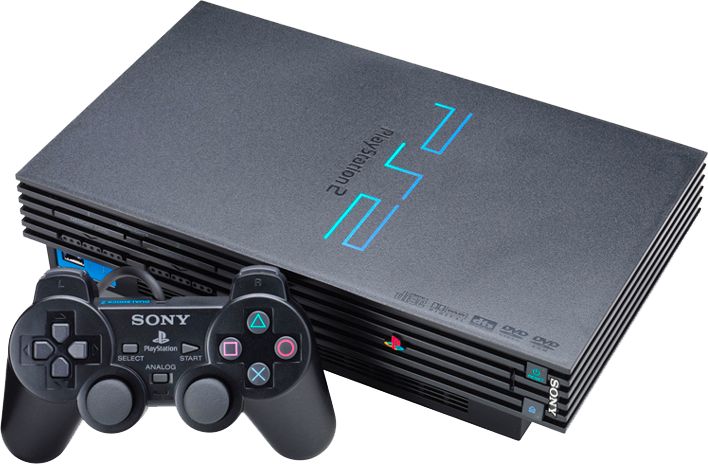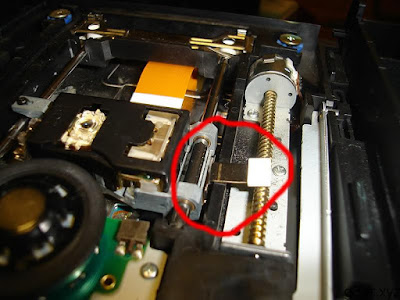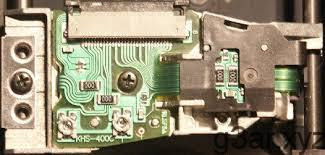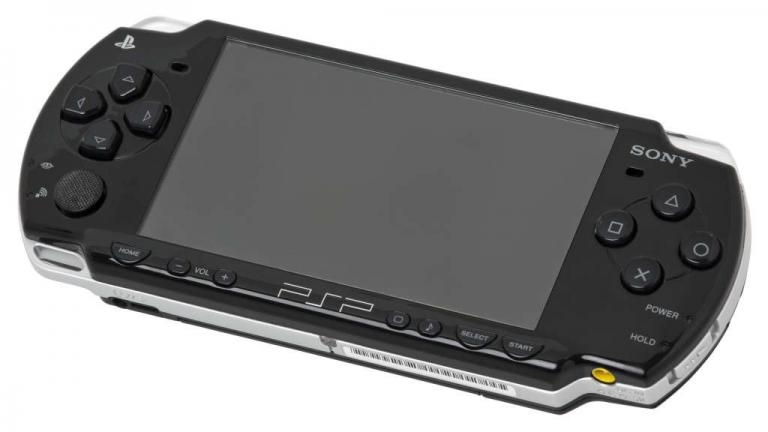
A PlayStation 2 Laser Repair step-by-step guide
Before attempting the risky procedure of adjusting the power to the laser via the pots, first try to clean the laser lens, as this is known to build up a thin layer of film which can reduce the laser's ability to read data from CD's and DVD's.
Using the disassembly instructions that can be found on this and other sites - remove the 8 or 10 screws from the base of the PS2 (found under the plastic and rubber tabs). Turn the station over and carefully remove the plastic top - making sure not to damage the reset cable that is on the same edge of the case as the Reset and Eject buttons.
You will then see the following plastic drive exposed. Remove the indicated screws and lift the drive cover off.
Gently wipe the Lens with either a Sunglass cleaning cloth or a cotton bud with non-corrosive cleaning fluid such as pure alcohol.
Whilst in this area, ensure that any other visible dust and hair is also removed, greasing the sled may also be performed whilst the laser case is open.
Adjusting Lens angle (Part 1)
On V1-V4 playstation laser assemblies there is a visible white cog (pictured below) that enables you to adjust the angle or height of the sled as the lens moves to the outer edge of the disk.
This adjustment is also known as the Radial Skew. As the laser gets old or worn - it may help to adjust this to bring the lens closer to the disk. V5 to V10 lasers also have the cogs, but they are not as obvious.
To perform this adjustment:
1) Eject the tray so that it is out of the way.
2) Mark the original position of the cog with a black marker pen.
3) To raise the sled adjust anti-clockwise
4) Only adjust one or two clicks at a time
5) After each adjustment test with both CD and DVD media.
6) Repeat until desired improvement occurs.
7) If no improvement - set back to original position.
Adjusting Lens angle (Part 2)
Known as Azimuth or Tangential Skew adjusting. This will adjust the angle the lens sits at on the sled. This should only need adjusting when replacing lens units - even then, the factory set angle should be fine!
 |
| DCF 1.0 |
To perform this adjustment:
1) Mark the original position of the screw with a white mark.
2) To raise the lens on the left adjust clockwise (screw in)
3) To lower the lens adjust anti-clockwise (screw out)
4) Only adjust fractions of a turn at a time.
5) After each adjustment test with both CD and DVD media.
6) Repeat until desired improvement occurs.
7) If no improvement - set back to original position.
Adjusting the pots
On all stations even ones of the same model number, the CD adjustment pot and the DVD pot can vary in factory set values, so always measure the original settings before adjusting the pots. It is not recommended to reduce the laser biasing by more than 10%, as this can reduce the life of the laser diode. Adjust your factory set laser biasing at YOUR OWN RISK.
V3 - 400B lasers
V5/6 - R-Type lasers
V4 to V10 400C Lasers
On All stations, depending on which media the laser struggles with:
- Carefully adjust the CD (or DVD) pot down by 50 to 100 ohms at a time,
- Test a backed-up CD (or DVD) that is known to work on other stations,
- If it does not play at all or skips, then continue to adjust the pot.
- Do not ever reduce the pot by more than 20% or to less than 600 ohms (V3).
The V3's I have worked with, play CDs better at around 700 ohms.
In General original settings can be around:
V3 stations - CD = 1080 to 1260, DVD = 800 to 1300
V4 stations - CD = 850 to 900, DVD = 1200 to 1400
V5 stations - CD = 1200, DVD = 1400
V7 stations - CD = 1200, DVD = 1100 to 1400
On worn lasers you will find more often than not - settings of around 10 to 20% less than factory setting are required to guarantee reliable booting.
Although this may reduce the life of the laser - at least you will get (depending on the required extent of adjustment) an extra 6 to 12+ months life out of the worn laser before being forced to buy a new one.
So a simple answer to all those people who warn against adjusting the laser pots is - well a working laser that will die some time in the future is far better than one that does not work at all now!












